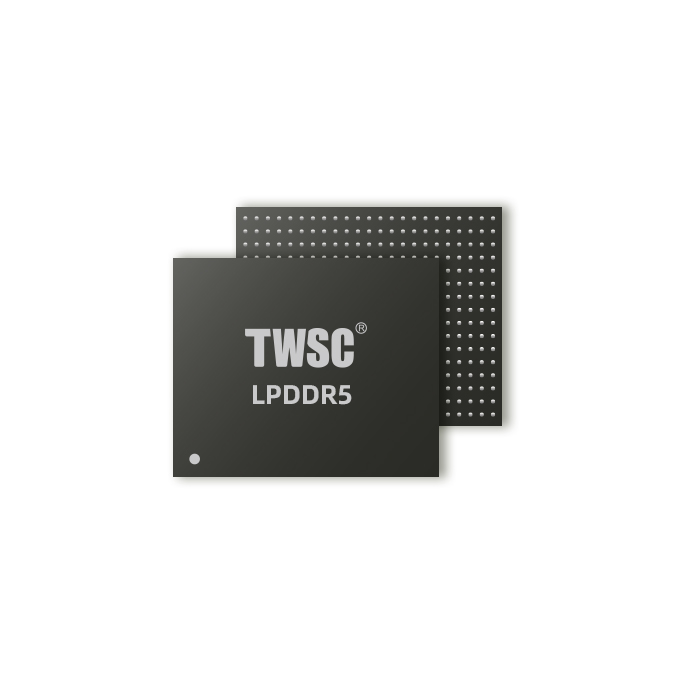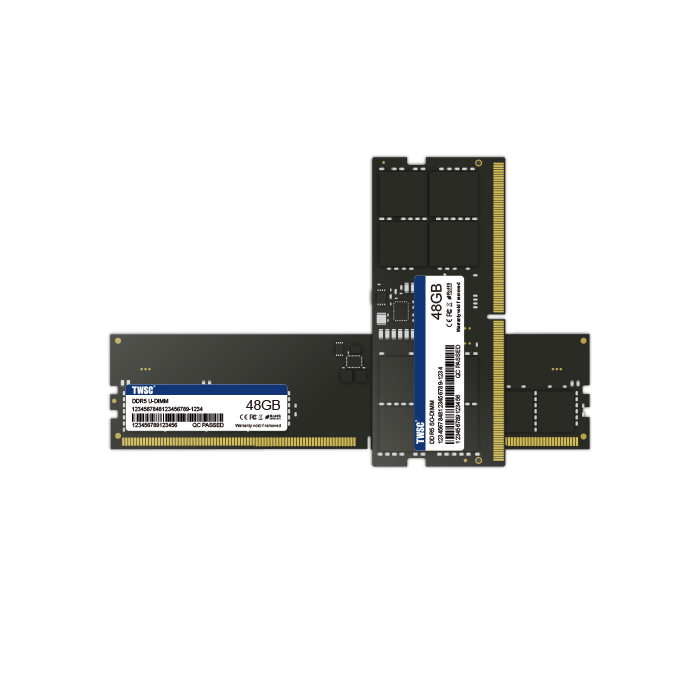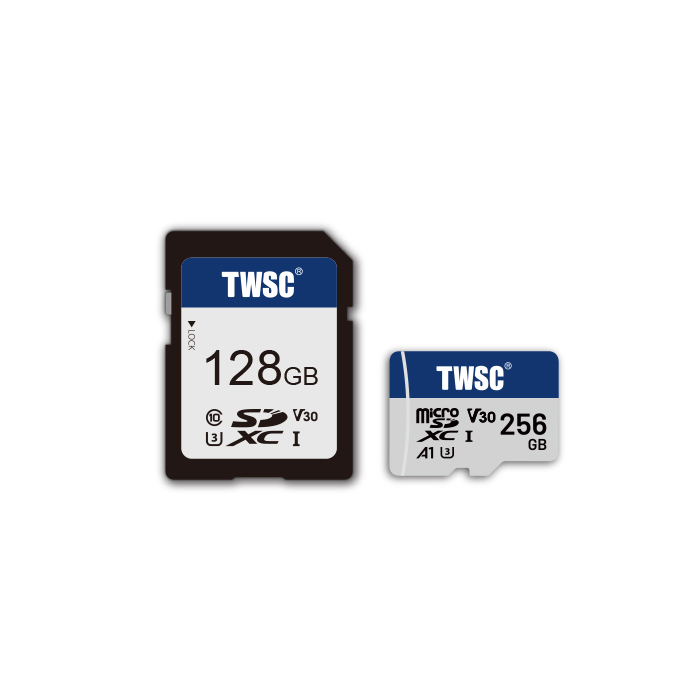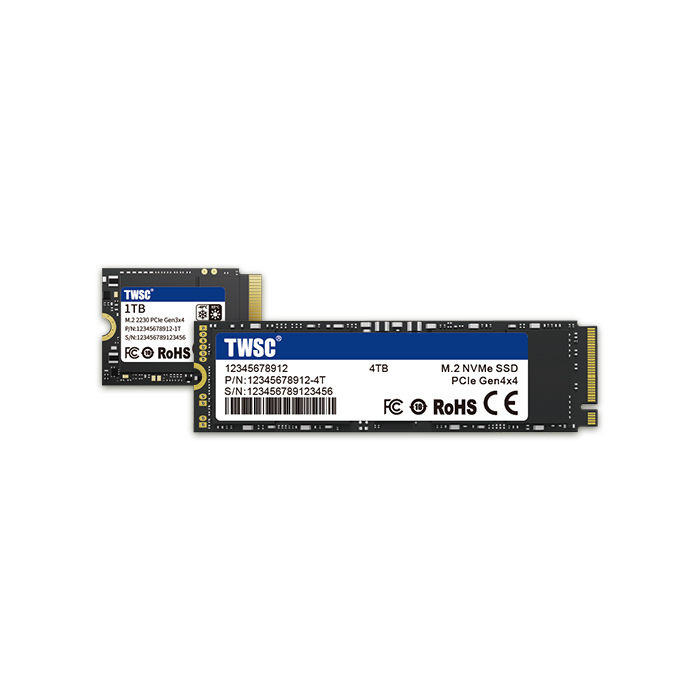As the demand for data storage in mobile computing and AI technology continues to grow, TWSC has leveraged its deep expertise in flash memory technology and module R&D to successfully develop China's first SD6.0-compliant storage chip, the TWSC2985 series, featuring 4K LDPC error correction technology. With its innovative design and outstanding performance, this chip provides efficient and reliable storage support for a wide range of applications, including mobile devices, drones, security surveillance, and vehicle recording, effectively addressing the complex and dynamic storage challenges of the big data era.
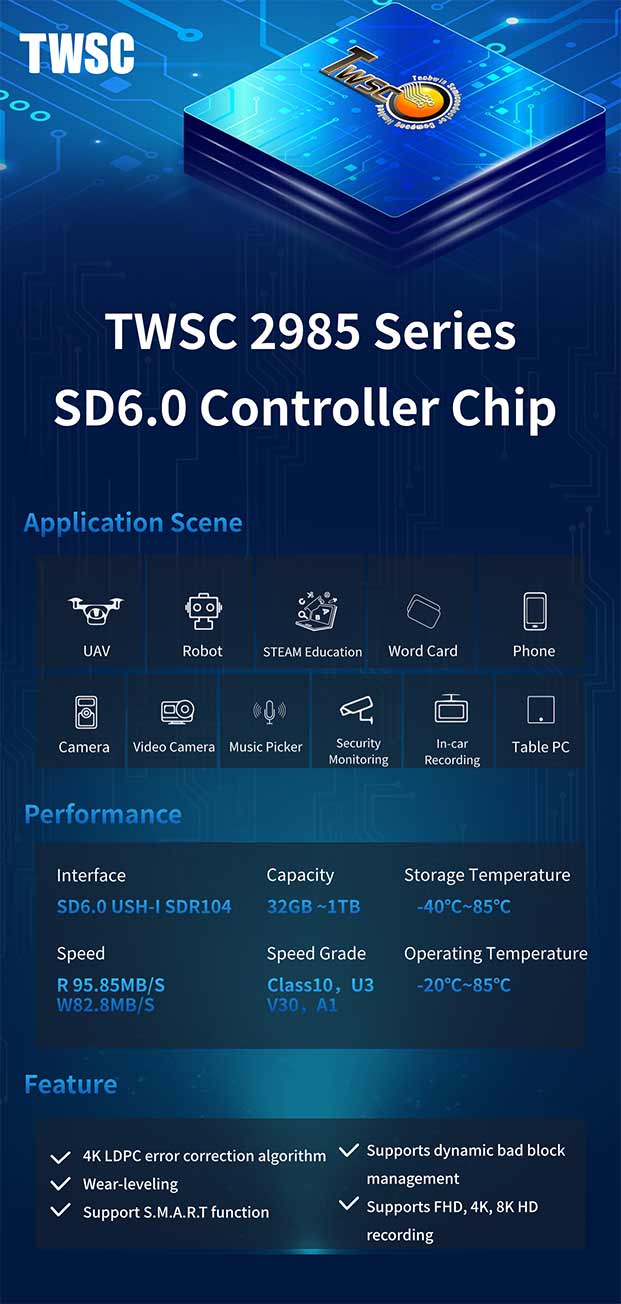
Enhanced Data Security: The First Domestic Chip Supporting 4K LDPC for Precise Error Correction
As the first SD6.0 series storage chip in China to support 4K LDPC error correction technology, TWSC utilizes an industry-leading UBER 1e-15 level error correction algorithm. Without compromising data throughput and access speed, it offers precise error correction for 3D TLC and QLC flash memory, significantly improving data integrity and accuracy in high-density storage environments. Even in harsh conditions, it ensures the safe and lossless storage of critical information such as drone footage, surveillance videos, and vehicle data.
Durable and Reliable Hardware: Highly Customized with Support for Multiple IO Modes
The TWSC2985 series demonstrates strong customization capabilities, with support for multiple IO modes such as LTT, CTT, and SSTL. It features built-in VREF and ODT functions and supports RE&DQS differential modes, further enhancing the stability and precision of data transmission.
- Supports Error Correction for 144/176 Layers and Beyond:By adopting an advanced combination of soft and hard decision methods, this chip not only ensures precise control over existing complex flash memory characteristics but also offers a flash memory solution for future high-density 3D TLC/QLC NAND flash technologies (144/176 layers and over 200 layers in the next 3-5 years). This feature allows the chip to seamlessly handle increasingly stringent storage challenges in data-intensive fields such as Industry 4.0 smart manufacturing and intelligent transportation systems, ensuring both data integrity and system reliability.
- Supports the Latest ONFI 4.0 Protocol:The TWSC2985 series supports the ONFI 4.0 interface protocol and is backward compatible with legacy modes such as SDR, NV_DDR2, and NV_DDR3. This ensures seamless integration with existing storage systems, reducing costs for users during equipment upgrades.
- Full-Scale Performance Upgrades:High efficiency and energy savings, with I/O speeds up to 200MT/S and support for operation in wide temperature ranges from -20°C to 85°C.
Multi-Voltage Low-Power Design
TWSC's R&D team has applied industry-leading production processes to achieve autonomous control from architecture design, firmware algorithm development, to chip layout design. Based on advanced 40nm process technology and multi-voltage low-power design, this series utilizes an efficient data transmission architecture and optimized cache management to achieve I/O speeds of up to 200MT/S. Additionally, TWSC's self-developed "ACCM" NAND flash management algorithm further enhances performance.
Stable Operation in Wide Temperature Ranges
After rigorous reliability testing, the TWSC2985 series has been proven to operate stably within a -20°C to 85°C wide temperature range, handling high-definition images and continuous video data with low latency and high energy efficiency, delivering a productive and energy-saving user experience.
With its 4K LDPC error correction technology, broad hardware compatibility, fully upgraded performance, and stable operation across wide temperature ranges, this series offers efficient, reliable, long-lasting, and energy-efficient storage solutions for consumer applications such as mobile devices, drone aerial photography, security surveillance, and vehicle recording. It not only sets a new benchmark for addressing the challenges of the big data era but also highlights TWSC's deep expertise and ongoing innovation in flash memory technology, opening a new chapter in data storage for users.


